Perennials - Just Arrived
In designing with plants, it is the perennials that ensure that there is constant change, and that there is always an element of surprise or interest in the garden.
Getting to know the dormant and flowering periods of the plants is essential to achieving the right balance in the design, so that as one perennial goes to sleep, another awakens.
Perennials, perhaps more than any other group of plants, are available in a huge range of colours, forms, textures and fragrances in both foliage and flower. There are perennials suitable for almost every area of the garden: from full sun to full shade, in large gardens or small beds and to suit every mood or style. Popular perennial plants include Penstemon, Gaura, Canna, Dahlias, Salvias, Lupins, Columbines, Lilies, Delphiniums and Hellebores - oh! the list is endless.
CLICK HERE FOR MORE INFORMATION
A perennial plant (Latin per, "through", annum, "year") is a plant that lives for more than two years, unlike an Annual which grows, sets seed, gayly disperses it and then dies - all in a single season. Perennial plants are divided into two large groups: those that are woody and those that are herbaceous. They can be short-lived (only a few years) or they can be long-lived, and can vary in size from only a few millimeters to over 10 meters tall. They include a wide assortment of plant groups from Ferns to the highly diverse flowering plants like Orchids and Ornamental Grasses.
Perennials typically grow structures that allow them to adapt to living from one year to the next. These structures include bulbs, tubers, woody crowns, rhizomes plus others. They might have specialized stems or crowns that allow them to survive periods of dormancy over cold or dry seasons during the year. Many perennials have adapted to survive under extreme environmental conditions: some can survive hot dry conditions, or cold temperatures. These plants tend to invest a lot of resource into their adaptations and often do not flower and set seed until after a few years of growth.
Many perennials produce relatively large seeds, which can have an advantage as they produce larger seedlings after germination that can better compete with other plants or more quickly develop leaves, ensuring their survival.
In warmer climates, perennials grow continuously. In seasonal climates, their growth is limited to the growing season. For example, in temperate regions a perennial plant may grow and bloom during the warm part of the year, with the foliage dying back in the winter. These plants are deciduous perennials. Regrowth is from existing stem tissue. In some species, perennials retain their foliage all year round; these are evergreen perennials. Come in and take a look around. We've always got something pretty, perky and persuasive in the perennial line.
CLICK HERE TO CLOSE MORE INFORMATION
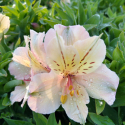
The Valley series has been bred as a mid-sized plant, with a much tidier habit than other picking Alstroemeria. Beach Valley features mid-sized stems of white blooms with a yellow eye. Easy care, prefers full sun and good drainage. Cut off at ground level if it gets untidy. Apply slug bait regularly.
Alstroemeria are one of the longest lasting flowers in a vase.
Habit: Clump Forming
Leaves: Deciduous, Green
Mature Size (HxW): 40cm x 30cm
Alstroemeria Beach Valley
Expected Stock Height: 20/25 cm ?
Currently sold out. Add to your waitlist to be advised when next in stock.
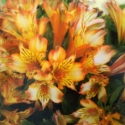
aka Peruvian Lily Inticancha
Bred for its compact habit and long flowering period - spring to autumn - this little perennial is definitely a top performer. Large blooms in tones of apricot and peach that would look great combined with terracotta. Plant in sun or semi-shade in well drained soil. Perennial. PVR
Habit: Clump Forming
Leaves: Deciduous, Green
Mature Size (HxW): 50cm x 75cm
Alstroemeria Bryce
Current Stock Height: 15/20 cm ?
Container: 2.5l ?
$36.99
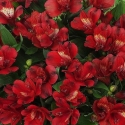
aka Peruvian lily Inticancha
Bright red flowers with a flash of lemon. The best, non-invasive, ultra-dwarf flowering in the world. The blooms are larger with more intense colours. They are easily the best dwarf Alstroemerias, offering eight months of flowers that are ideal for cutting.
Habit: Clump Forming
Leaves: Deciduous, Green
Mature Size (HxW): 30cm x 40cm
Alstroemeria Doba
Expected Stock Height: 15/20 cm ?
Currently sold out. Add to your waitlist to be advised when next in stock.
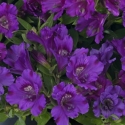
aka Peruvian lily Inticancha
Inticancha series. A stunning deep indigo purple lily. Inticancha is a series of strong pot alstroemerias that are easy to maintain, that flower from spring until autumn. Plants are compact, with elegant bright petals. Best results achieved in well drained acid soil, full /part sun. Perennial. PVR.
Habit: Clump Forming
Leaves: Deciduous, Green
Mature Size (HxW): 50cm x 60cm
Alstroemeria Indigo
Expected Stock Height: 15/20 cm ?
Currently sold out. Add to your waitlist to be advised when next in stock.
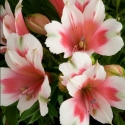
aka Peruvian Lily Inticancha
Peruvian Lily - Inticancha series. Maya offers soft pink and white blooms in such profusion they smother the attractive green foliage. Great for cutting and happy in borders and containers. Prefers well drained soil in a partly shaded, sheltered site. Hardy perennial.
Dead head by pulling the flowers stems gently from the bottom of the plant, the resulting ‘wound’ then initiates new flowers.
Habit: Clump Forming
Leaves: Deciduous, Green
Mature Size (HxW): 30cm x 30cm
Alstroemeria Maya
Current Stock Height: 15/20 cm ?
Container: 2.5l ?
$36.99
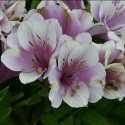
aka Peruvian lily Inticancha
Peruvian Lily. Inticancha Series. Bred to be compact and uniform in habit while still providing maximum flower power. White blooms with pale lilac throat that will put on a show from summer to autumn. Lovely to pick. Plant in sun or part shade in well drained acid soil for best results. Perennial.
Habit: Clump Forming
Leaves: Deciduous, Green
Mature Size (HxW): 30cm x 45cm
Alstroemeria Moon
Expected Stock Height: 15/20 cm ?
Currently sold out. Add to your waitlist to be advised when next in stock.

aka Peruvian Lily
Summer Paradise Series. Soft pink edges with a white throat on flowers which are perfect for picking. Taller than our other varieties Summer Holiday flowers on strong stems and stays compact and upright in your garden for weeks. Great for picking. Forms a nice compact clump in the garden or a container. Perennial.
Habit: Clump Forming
Mature Size (HxW): 75cm x 60cm
Alstroemeria Summer Break
Expected Stock Height: 20/25 cm ?
Currently sold out. Add to your waitlist to be advised when next in stock.
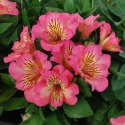
aka Peruvian lily Inticancha
Peruvian Lily. Inticancha Series. Bred to be compact and uniform in habit while still providing maximum flower power. Vivid pink and yellow blooms that will put on a show from summer to autumn. Lovely to pick. Plant in sun or part shade in well drained acid soil for best results. Perennial. PVR.
Habit: Clump Forming
Leaves: Deciduous, Green
Mature Size (HxW): 30cm x 45cm
Alstroemeria Sunshine
Current Stock Height: 15/20 cm ?
Container: pb8 ?
$36.99
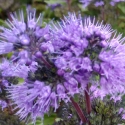
Pavillon Blue has gorgeous Soft blue flowers that appear at the end of Summer. A versatile shrub for the border. Attractive to butterflies. Good for cut flowers. Hardy and drought tolerant. Prefers full sun and well drained soil.
Suitable for warmer areas including Auckland/Northland
Habit: Upright
Leaves: Semi-Evergreen, Green
Mature Size 7-10 yrs (HxW): 50cm x 50cm
Caryopteris Pavillion Blue
Current Stock Height: 15/20 cm ?
Container: 1.5l ?
$24.99
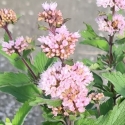
Pavillon Pink has gorgeous Soft pink flowers that appear at the end of Summer. A versatile shrub for the border. Attractive to butterflies. Good for cut flowers. Hardy and drought tolerant. Prefers full sun and well drained soil.
Suitable for warmer areas including Auckland/Northland
Leaves: Deciduous, Green
Mature Size 7-10 yrs (HxW): 60cm x 70cm
Caryopteris Pavillion Pink
Current Stock Height: 10/15 cm ?
Container: 1.5l ?
$24.99
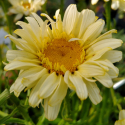
From the shasta daisy family this new improved form has gorgeous fancy fringed central petals on large blooms throughout the summer and into autumn. Great for picking or en masse in the garden. The flower is cream to lemon with contrasting deep yellow centre. They have improved disease resistance.
Deadhead to encourage repeat flowering
Habit: Bushy
Leaves: Deciduous, Green
Mature Size (HxW): 90cm x 40cm
Leucanthemum Charmer
Expected Stock Height: 30/40 cm ?
Currently sold out. Add to your waitlist to be advised when next in stock.
HL Nurseries Limited t/a Wairere Nursery
826 Gordonton Road, R D 1, Hamilton 3281 Ph: (07) 824 3430 Email: